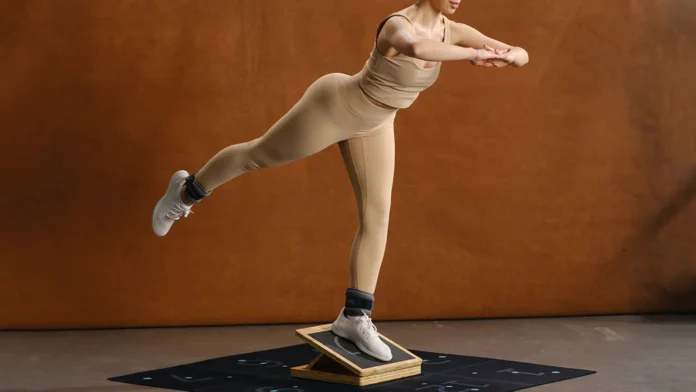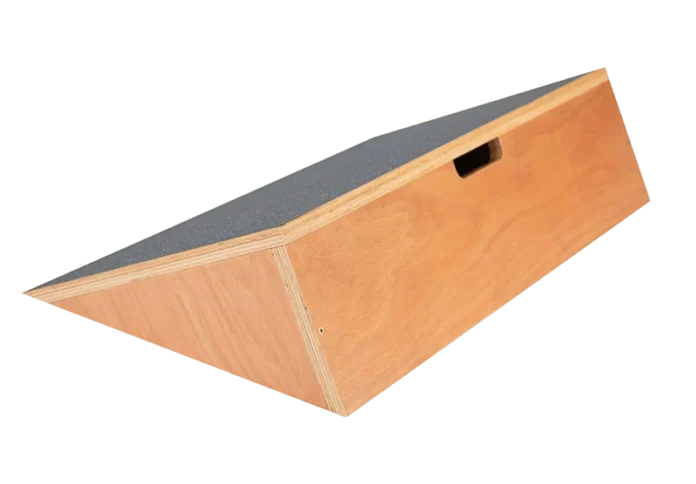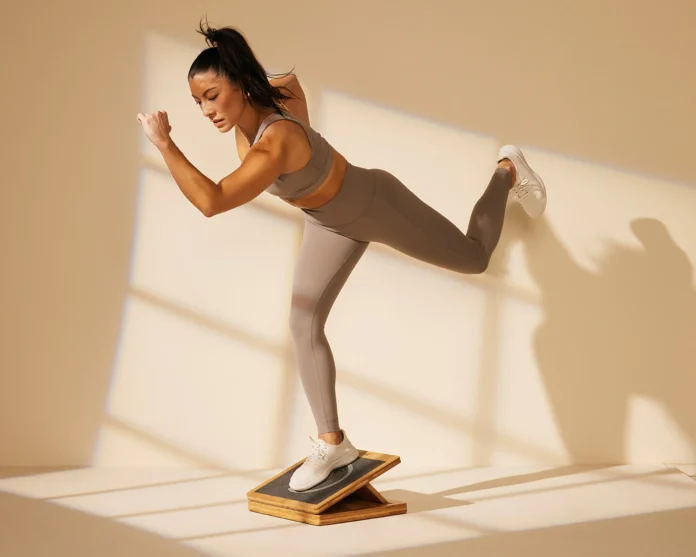A slant board is a simple yet versatile tool that has gained popularity in the fitness and rehabilitation world. It is a flat board that is inclined at an angle, typically ranging from 15 to 45 degrees. This unique design allows individuals to perform exercises or stand with their feet on the board, creating an inclined surface for the body. But how long should you stand on a slant board to reap its benefits? In this article, we will explore the various angles of slant boards, the advantages they offer, and provide recommendations for beginners and advanced users.
Benefits of using a slant board for exercise and rehabilitation
Slant boards offer a multitude of benefits for both exercise enthusiasts and those undergoing rehabilitation. Firstly, standing on a slant board engages different muscle groups in the lower body, including the calves, quads, and glutes. This increased muscular activation can enhance strength, stability, and balance. Moreover, using a slant board can improve ankle mobility and flexibility, which are crucial for movements like squatting and lunging.
For individuals recovering from ankle injuries or surgeries, they provide an excellent tool for rehabilitation. The controlled and gradual progression of exercises on the board can help rebuild strength, improve range of motion, and regain proprioception. Additionally, slant boards can be used for stretching exercises to alleviate tightness in the calf muscles and plantar fascia, which is beneficial for conditions like Achilles tendonitis and plantar fasciitis.

Importance of proper posture and alignment while using a slant board
When using a slant board, maintaining proper posture and alignment is paramount. It is crucial to ensure that the feet are placed securely on the board, with the weight evenly distributed. The knees should be slightly bent and aligned with the toes, and the spine should be neutral, avoiding excessive arching or rounding.
Proper posture and alignment not only optimize the effectiveness of exercises but also prevent injuries. It minimizes stress on the joints, reduces the risk of muscle imbalances, and promotes a healthy movement pattern. Paying attention to posture and alignment while using a slant board sets a solid foundation for maximizing the benefits and minimizing the risks associated with this tool.
Different angles of slant boards and their effects on the body
Slant boards come in various angles, each offering unique effects on the body. A lower angle, such as 15 degrees, provides a gentle incline and is suitable for beginners or individuals with limited mobility. This angle focuses more on ankle flexibility and is ideal for stretching exercises or gradual strengthening.
A moderate angle, around 30 degrees, provides a balance between ankle mobility and muscle activation. This angle is suitable for most individuals, promoting strength development while maintaining a comfortable range of motion. It is a good starting point for beginners and can be used for a variety of exercises and stretches.
A higher angle, such as 45 degrees, increases the challenge by intensifying the workout and requiring more muscle engagement. This angle is best suited for advanced users who have built strength and stability over time. It can be used to enhance balance and strength, and even to simulate uphill running or walking.
Recommendations for beginners: Duration and frequency of use
For beginners, it is essential to start slowly and gradually increase the duration and intensity of exercises. Begin with 5-10 minutes per session, two to three times a week. This frequency allows the body to adapt to the new stimulus while minimizing the risk of overexertion or injury.
As you become more comfortable and experienced, gradually increase the duration to 15-20 minutes per session. However, always listen to your body and adjust the time based on individual limitations. If you experience any discomfort or pain, reduce the duration or consult a healthcare professional for guidance.

Advanced users: Increasing duration and incorporating exercises on the slant board
For advanced users seeking to maximize the benefits of a slant board, increasing the duration and incorporating exercises are key. Aim for 30-45 minutes of standing time per session, two to three times a week. This prolonged duration allows for greater muscle activation and endurance development.
In addition to standing, advanced users can incorporate exercises like squats, lunges, or calf raises on it. These exercises further challenge the lower body muscles and enhance overall strength and stability. Gradually progress the intensity and difficulty of the exercises to continue pushing your limits while maintaining proper form and alignment.
Precautions and potential risks of using a slant board
While slant boards offer numerous benefits, it is important to be aware of potential risks and take necessary precautions. Individuals with pre-existing ankle or knee injuries should consult with a healthcare professional before using a slant board to ensure it is suitable for their condition.
It is crucial to start with a lower angle and gradually progress to higher angles to avoid overexertion or strain on the muscles and joints. Additionally, always warm up before using it to prepare the body for the exercises and stretches.
Understanding individual limitations and adjusting standing time accordingly
Every individual is unique, and it is important to understand and respect your limitations when using a slant board. If you have any underlying medical conditions or concerns, consult a healthcare professional before incorporating them into your routine.
Pay attention to your body’s signals during and after using it. If you experience excessive fatigue, pain, or discomfort, reduce the standing time and reassess your approach.

Listening to your body: Signs of fatigue or discomfort to watch for
As you engage in these exercises, it is crucial to listen to your body and watch for signs of fatigue or discomfort. If you experience sharp or persistent pain, stop immediately and consult a healthcare professional. Muscle fatigue is normal, but if it becomes overwhelming or affects your balance, take a break and gradually increase the standing time over subsequent sessions.
Additionally, be mindful of any excessive soreness or inflammation in the ankles or calves after using it. This could indicate overexertion, and it may be necessary to reduce the duration or intensity of your sessions.
How to progress gradually to maximize benefits and avoid overexertion
To maximize the benefits and avoid overexertion, it is important to progress gradually. Start with a lower angle and shorter duration, and gradually increase the angle and standing time as your strength and stability improve.
If you find a particular angle or exercise too challenging, don’t hesitate to go back to a lower angle or simpler exercise until you feel comfortable progressing again. The key is to find a balance between pushing your limits and maintaining proper form and alignment.
Conclusion: Finding the optimal standing time on a slant board
The optimal standing time on it varies from individual to individual, depending on factors such as fitness level, goals, and any existing medical conditions. Beginners should start with shorter durations and gradually increase them, while advanced users can aim for longer sessions.

Remember to prioritize proper posture and alignment, pay attention to your body’s signals, and progress gradually to avoid overexertion or injury. Whether you use it for exercise or rehabilitation, it can be a valuable tool for improving strength, stability, and ankle mobility. Embrace the challenge, listen to your body, and discover the benefits of incorporating it into your fitness or rehabilitation routine.









